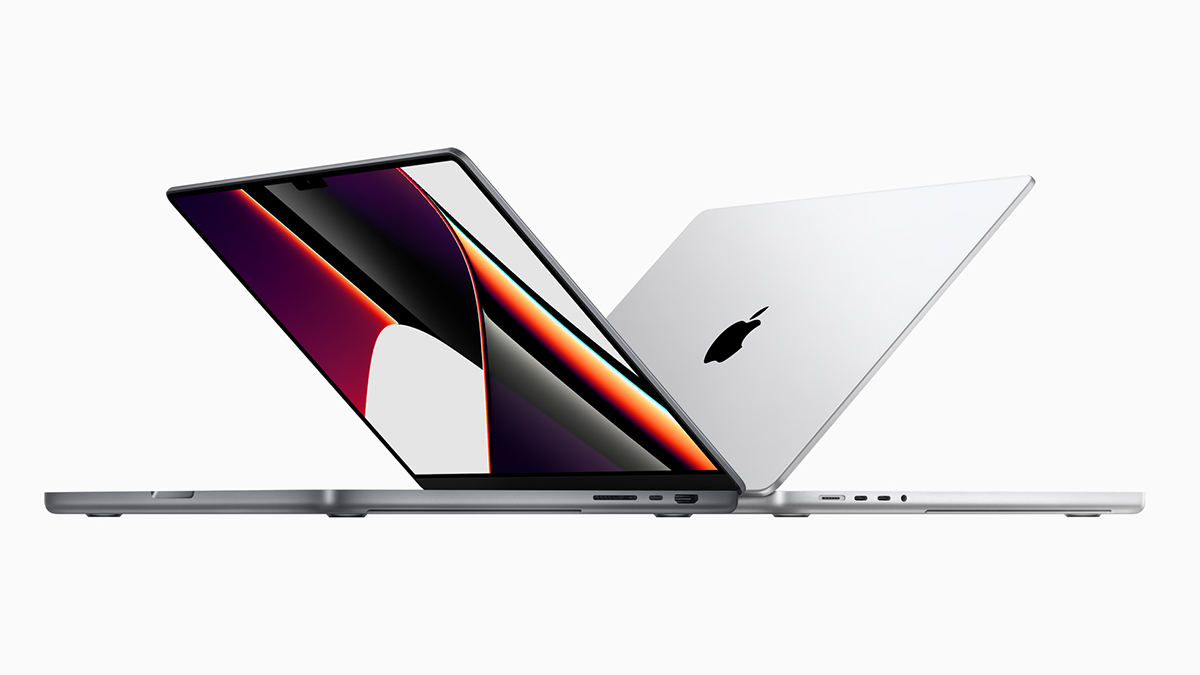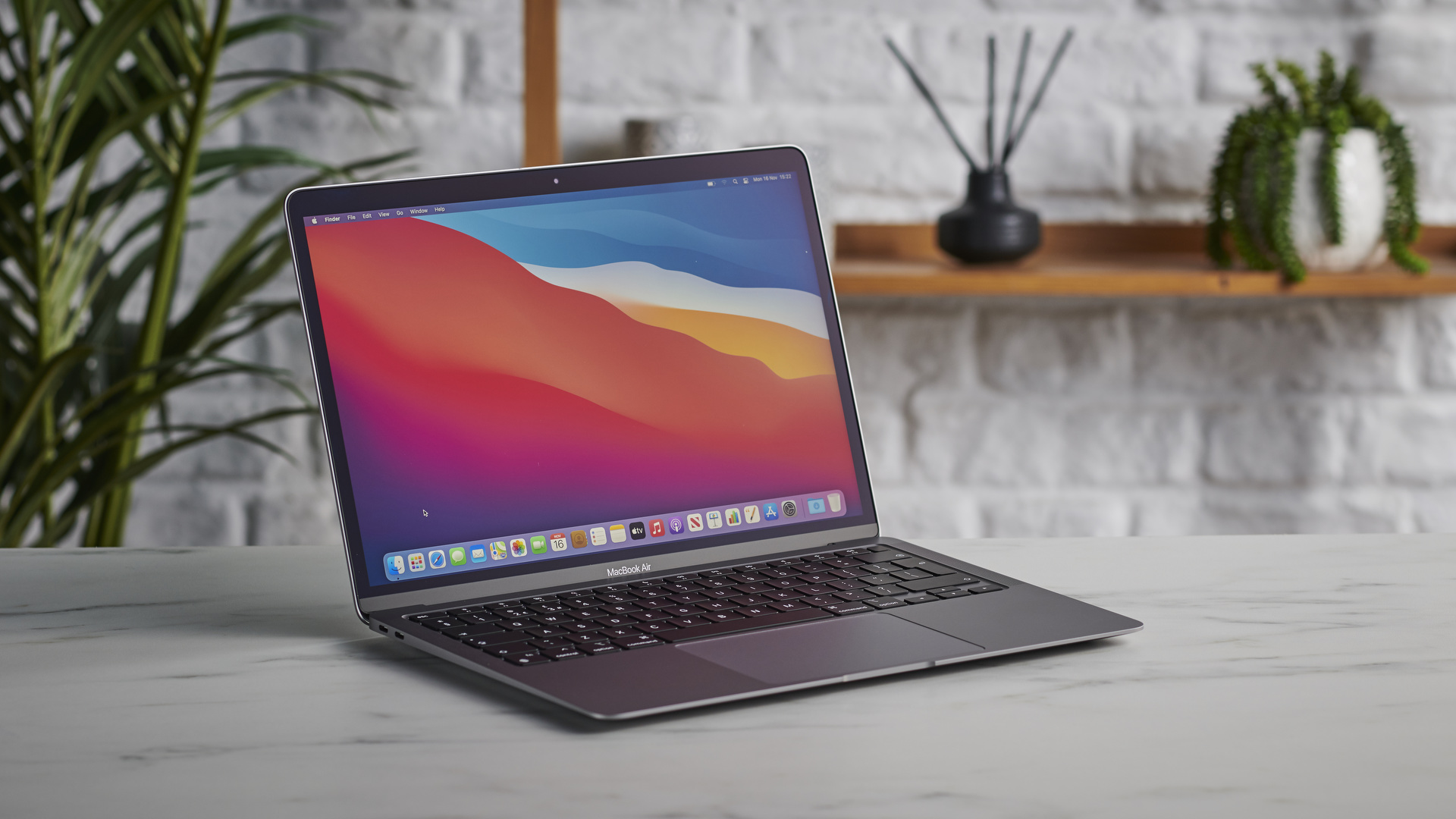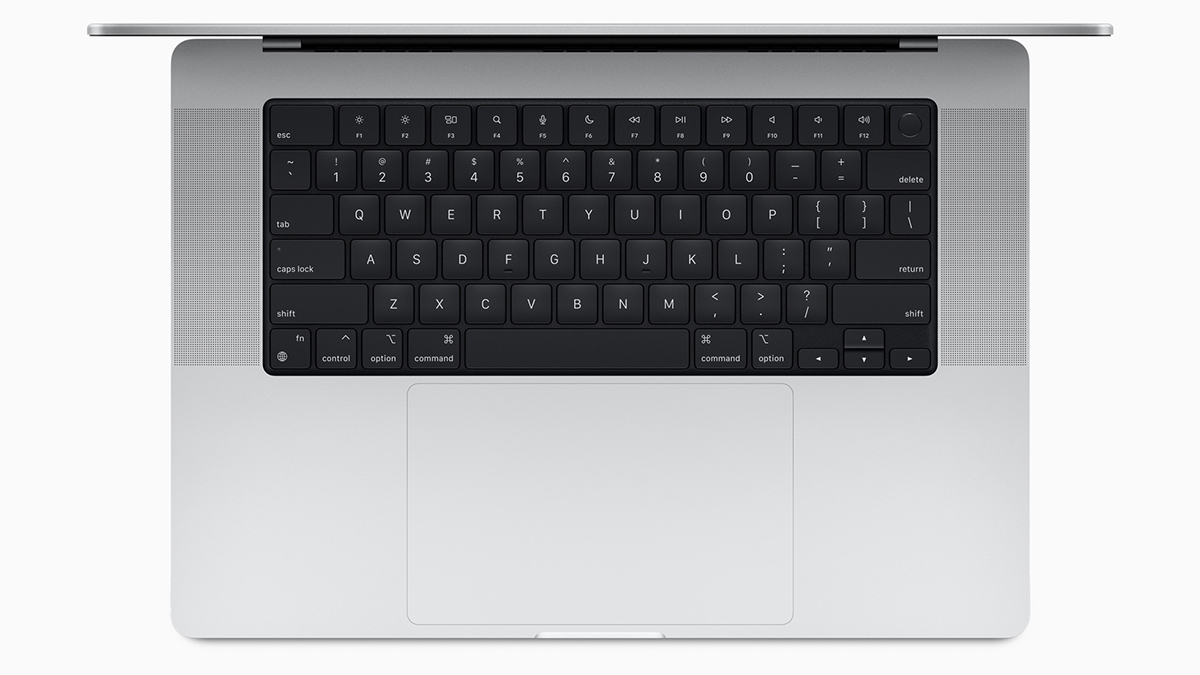MusicRadar Verdict
Quite simply the best MacBook that Apple has ever made, and the one that pro-level music producers have been waiting for.
Pros
- +
Incredibly powerful
- +
New 'industrial' design
- +
Enhanced connectivity options
- +
No more Touch Bar
- +
Excellent display and speakers
Cons
- -
It's expensive...
- -
...Particulary if you add more RAM and storage
- -
16-inch model is heavy
MusicRadar's got your back
Apple MacBook Pro 14-inch and 16-inch review: What is it?
BEST OF 2021: Since their launches last year, Apple’s M1 Macs (the MacBook Air, 13-inch MacBook Pro and Mac mini) have been showered with praise - and rightly so.
However, they’re not for everyone. Great though these machines are, they represented a first step on Apple’s journey away from Intel towards its own silicon ‘system on a chip’ technology, and were designed more for consumers, hobbyists and ‘prosumers’ (whatever that means) than hardcore creative professionals.
In the eyes of these pros - many music producers among them - there are a few things that have held the M1 machines back. These relate not so much to outright speed - the M1 chip has shown itself to be something of a powerhouse - but to issues such as RAM capacity (a maximum of 16GB), screen size (a mere 13.3 inches) and connectivity (not enough ports, basically). A design refresh was on a lot of people’s ‘most wanted’ lists, too.
Something else was required, then - and now it’s here.

The 2021 MacBook Pro comes in two sizes - 14-inch and 16-inch - and with a choice of two different processors: M1 Pro and M1 Max. As with the M1, these integrate the CPU, GPU, security, I/O and memory onto a single chip, but promise significantly enhanced performance.
The M1 Pro offers an up to 10-core CPU and up to 70% faster performance than the M1, with GPU performance that promises to be up to twice as fast. Memory bandwidth is 200GB/s - that’s getting on for three times that of the M1 - and you can install up to 32GB of RAM.
The M1 Max has the same 10-core CPU as the top M1 Pro, but doubles the maximum GPU core count to 32. This is said to equate to four times faster GPU performance than the M1. This chip can handle up to 64GB of RAM, and the memory bandwidth speed is 400GB/s.
Want all the hottest music and gear news, reviews, deals, features and more, direct to your inbox? Sign up here.
For video processing, the M1 Pro features a ProRes accelerator in the media engine. The M1 Max gives you two, so pros can edit even more hi-res streams simultaneously.
Apple claims that the new MacBook Pros will maintain their performance levels whether they're running on mains or battery power; maximum running times for the 14-inch and 16-inch machines are quoted at 17 hours and 21 hours respectively.
In terms of physical changes, these new MacBook Pros have a Liquid Retina XDR display that features the same mini-LED technology that’s used in the iPad Pro. This includes ProMotion technology that features an adaptive refresh rate of up to 120Hz. The bezels around the screen are significantly thinner than those on the previous model, and the machine as a whole has a chunkier, more industrial feel to it.
Strangely, one of the other new ‘features’ is the removal of an existing one: the Touch Bar. This always felt like a bit of a fudge - a byproduct of Apple’s reluctance to put a touchscreen on a MacBook - and we’re happy to see a row of function keys returning in its place, complete with a good old Escape key.
There’s plenty to take in on the sides of the 2021 MacBook Pro: two Thunderbolt 4 ports, a 3.5-mm headphone jack (with support for high-impedance headphones) and a Magsafe power adapter (another old favourite that’s making a return) on the left, and a further Thunderbolt 4 port, an SDXC card slot and an HDMI port on the right.
Back up top, you’ll find a 1080p FaceTime HD camera in a 'notch' in the screen, an improved array of mics, and a “high-fidelity” six-speaker sound system that promises 80 percent more bass than the one it replaces. Spatial Audio playback is supported, too.
Apple MacBook Pro 14-inch and 16-inch review: Performance & verdict
Let’s get this straight: our test machine - a 16-inch, 10-core M1 Max machine with 64GB of RAM - is a beast, in every conceivable way.
This isn’t a light laptop (it weighs in at 2.1kg, which is 0.5kg heavier than the 14-inch model) and it’s not a dainty one, either. There’s a hefty price attached to this kind of spec, too - the ‘entry-level’ M1 Max machine, with 32GB RAM and 512GB storage, costs $3,099/£2,999.
It’s fair to say that some of our colleagues weren’t all that taken with the new MacBook Pro’s more chunky design, which actually has echoes of the laptops that Apple was making more than a decade ago. We rather like it, though - it looks like a computer that means business.

And that, really, is what the 2021 MacBook Pro is all about. It’s not a machine for casual users, or a family laptop that gets passed around laps on the sofa. It’s a computer that’s laser-targeted at professionals - particularly those in the creative industries.
This is reflected in the performance, which is little short of jaw-dropping. We ran our usual Logic Pro test, using the Benchmark project created by Music-Prod. This contains a big stack of identical duplicated tracks, each loaded up with Logic’s Sculpture synth and five effects playing a heavy chord. The challenge for the Mac is to see how many of these tracks it can play without falling over.
The 2020 13-inch M1 MacBook Pro coped with 106 tracks in our test, while the M1 MacBook Air topped-out at 98. The 16-inch MacBook Pro with M1 Max, though, managed a whopping 181, which is not altogether surprising, but still hugely impressive.
To put this in context, according to Music-Prod, the only Macs to have beaten this figure are the 2019 and 2020 Mac Pros (these achieved 265 and 386 tracks respectively), desktop machines that can end up costing tens of thousands. The new MacBook Pro certainly isn’t cheap, but it’s reasonable to say that we haven’t seen anything like this kind of performance in an Apple laptop before.
We can confirm that battery life is excellent, too, while the built-in speakers do a pretty impressive job when you’re listening to music or watching video. Obviously, you’re not going to finish a mix on them, but there’s a definite sense of immersion, and it’s to Apple’s credit that they’re more than just an afterthought.
A shout-out to the mic array, too - again, a step-up from the usual laptop fare - and we can also confirm that those who saw us on FaceTime through the 1080p camera said we'd never looked better (though they might just have been being polite, obviously).

Here’s the big question, though: do you really need all this power? Producers and composers who are working on huge, RAM-intensive projects will certainly appreciate it, as will those who work with a lot of hi-res video, but for the vast majority of us, it’s not really required.
The sweet spot, we feel, could actually be the entry-level 14-inch M1 Pro MacBook Pro, which has an 8-core CPU, 14-core GPU, 16GB RAM and 512GB SSD, and costs $1,999/£1,899. This makes it only $550/£450 more expensive than an 8-core M1 MacBook Air with the same memory and storage specs, and $300/£200 more expensive than the comparable 13-inch M1 MacBook Pro, which comes with the now out-of-favour Touch Bar.
These aren’t insignificant sums, obviously, but when you start crunching the numbers, you might decide that it’s worth paying the extra for the benefits that the 2021 MacBook Pro offers (better screen, more connectivity, improved speakers, mics and camera etc).
To have one quick moan, we’re still frustrated by how much it costs to spec-up the RAM and SSD sizes in these machines. Unless you’re willing to spend a fortune on storage at the outset, the chances are that you’ll be plugging in an external drive or two sooner rather than later.
Ultimately, though, what we have here is the best, most powerful MacBook that Apple has ever made, and the one that pro music producers have been waiting for.
Apple MacBook Pro 14-inch and 16-inch review: Hands-on reviews
Sonicstate
Andrew Huang
Apple MacBook Pro 14-inch and 16-inch review: Specifications
- Key features: Apple M1 Pro or M1 Max chip with up to 10-core CPU, up to 32-core GPU and 16-core Neural Engine, up to 64GB RAM, up to 8TB SSD, 14.2-inch or 16.2-inch Liquid Retina XDR display with True Tone, Backlit Magic Keyboard, Touch ID, Three Thunderbolt / USB 4 ports, HDMI port, SDXC card slot
- Contact: Apple

I’m the Deputy Editor of MusicRadar, having worked on the site since its launch in 2007. I previously spent eight years working on our sister magazine, Computer Music. I’ve been playing the piano, gigging in bands and failing to finish tracks at home for more than 30 years, 24 of which I’ve also spent writing about music and the ever-changing technology used to make it.
